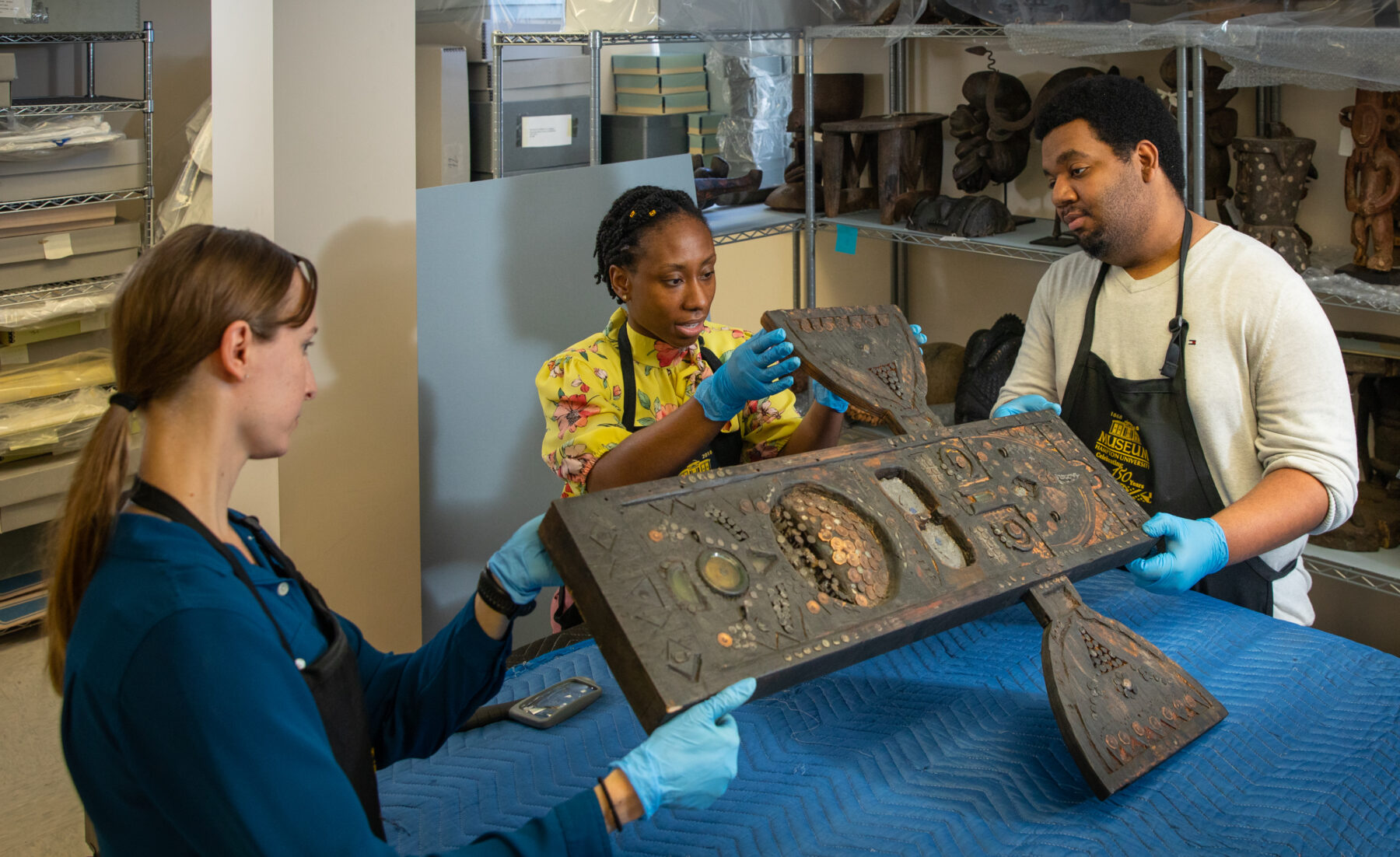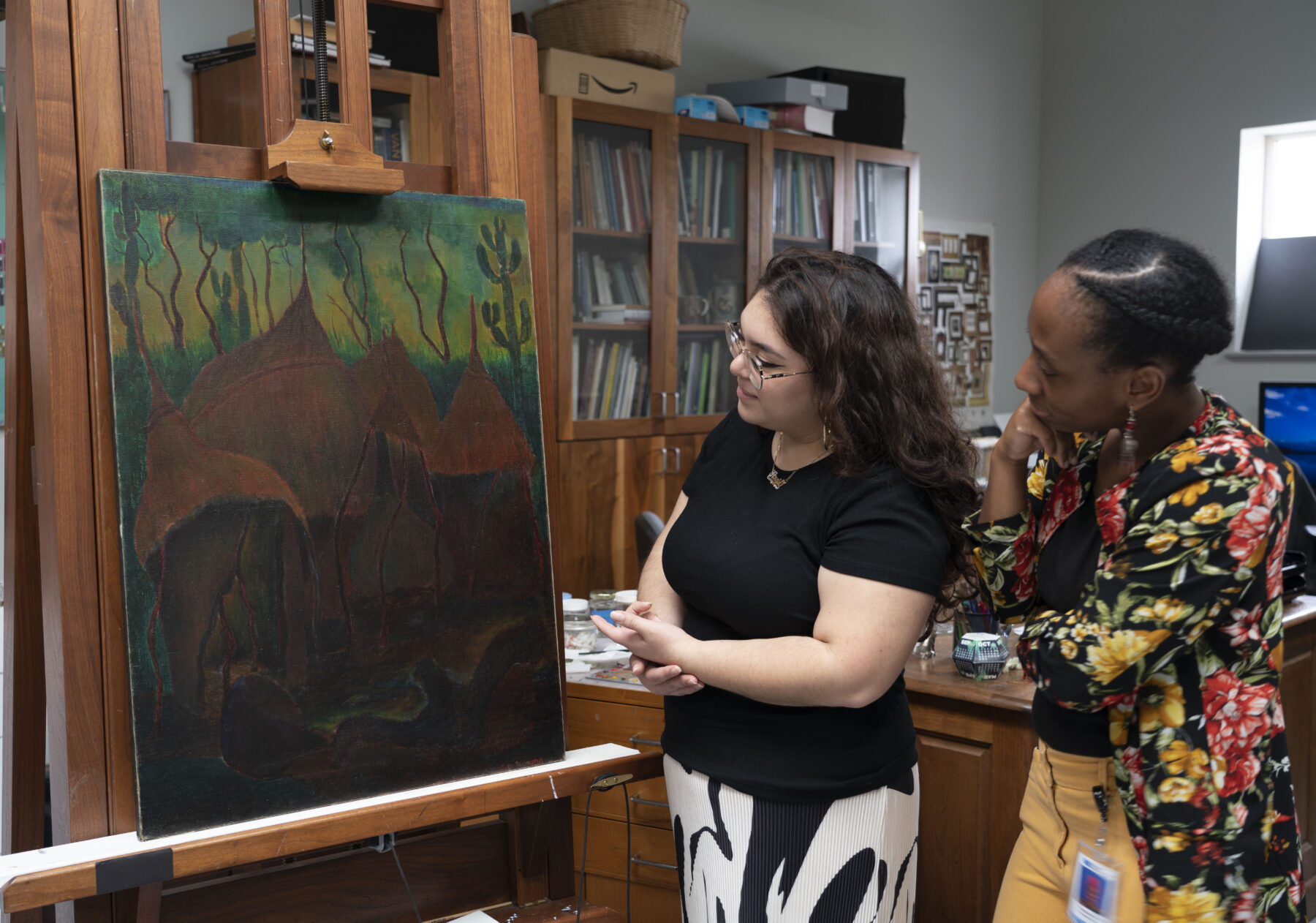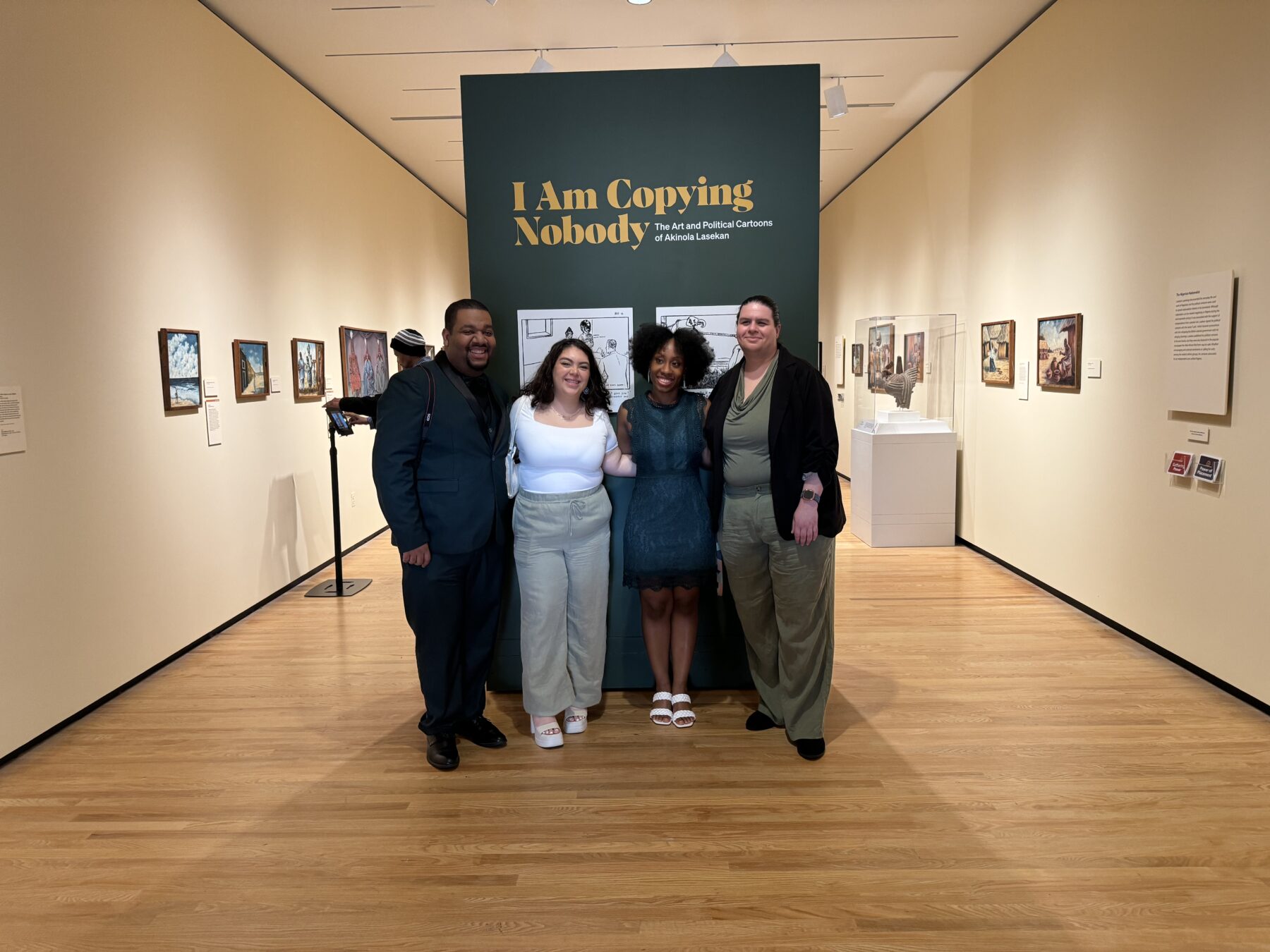Virtual Tree House Summer Camp

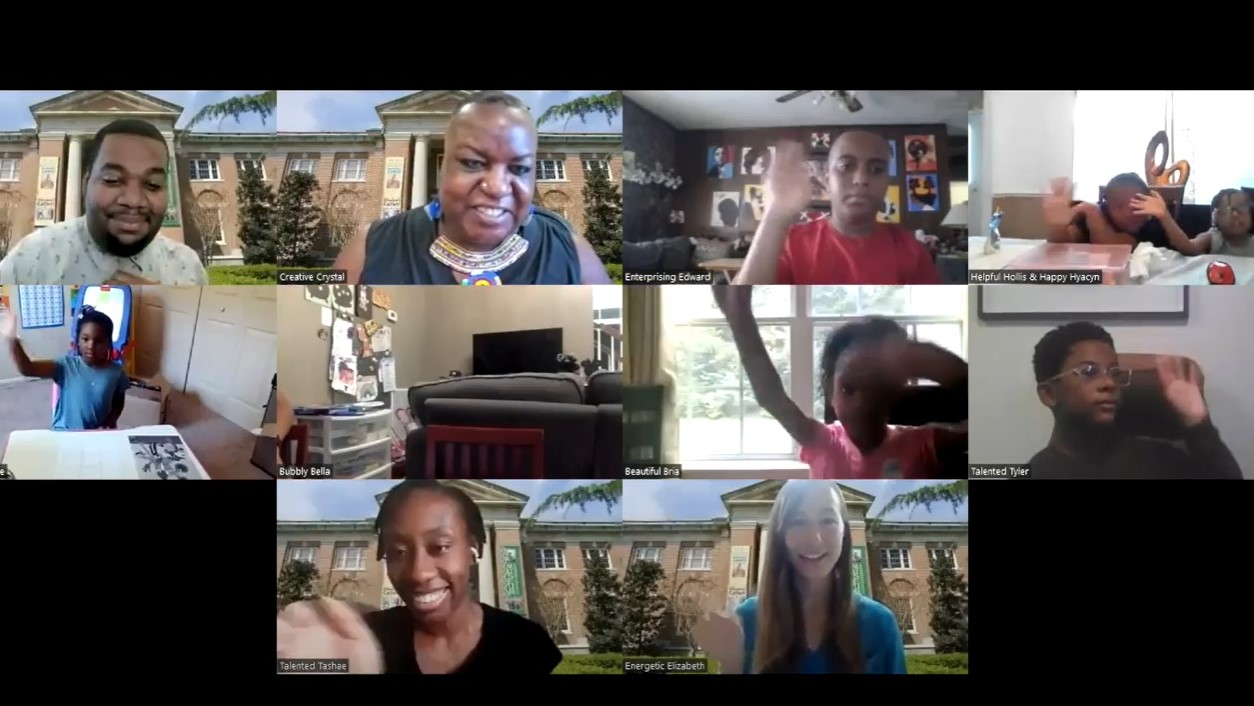
Picture of all the Tree House Camp participants. Photo courtesy of Hampton University Museum.

On Monday July 11th, we had the opportunity to help kick off the Tree House Summer Camp by being guest speakers on a virtual Zoom program. Hampton University Museum’s Tree House Summer Camp is a week-long virtual camp that is organized by Crystal Johnson, Associate Curator and Director of Membership and Community Programs. The virtual camp allows children ages 5 to 12 to participate in STEAM-related activities, games, storytelling, and daily challenges. This was our first presentation describing what we do as a curator and conservator to children under 12. With that in mind, we tailored our presentation to be short and simple but also fun and engaging. We wanted the kids to get into the mindset of each role, so we planned activities that could be done virtually, and which would encourage feedback and participation.
Takeaway #1: Virtual programs have both positives and negatives. Having the kids’ names easily visible on Zoom was very helpful. However, Zoom does make it harder to see who is raising their hand, especially while in presenter mode.
The Presentation
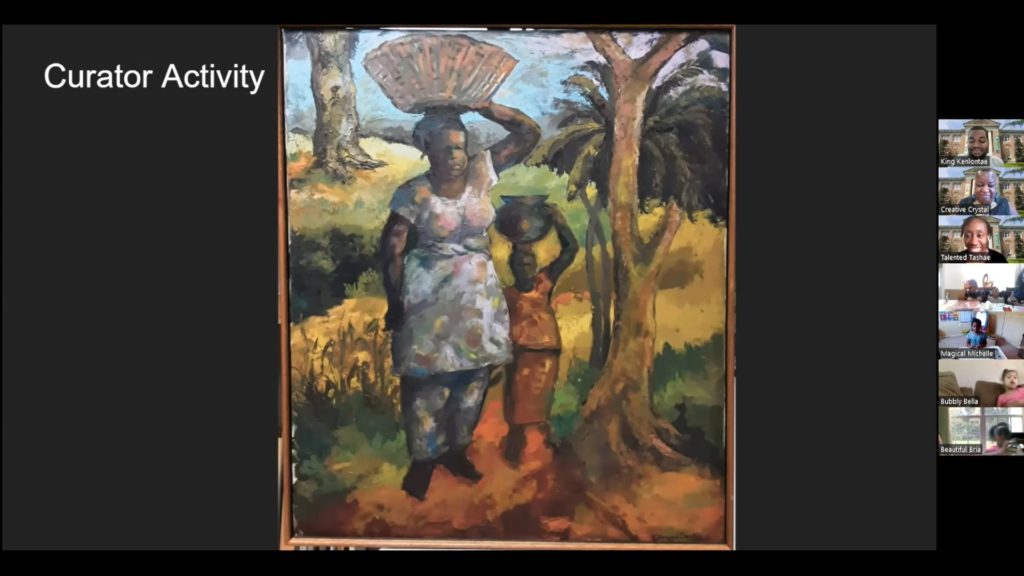
Our portion of the camp started with Tashae describing what a curator is and what one does. After asking the children what types of museums a curator might be found in, it became evident that they were very knowledgeable in different types of museums such as art, history, and science museums. Tashae went on to explain that a curator uses objects in a museum’s collection to create exhibits which present information on a specific topic or in other words, to tell a story. Before an object can be put in an exhibit, we must first learn more information about it. This led into the curator activity. Tashae showed the children an image of A Market Day by Emmanuel Owusu Dartey, one of the paintings from the Harmon Foundation Modern African Art collection. She explained to the students that they were going to practice being art curators. As art curators, they needed to first use their eyes to gather information about the piece. Tashae asked them a series of questions such as “who are the people in the painting” and “if you were in the painting, what would you hear and smell”. There were many great answers from the kids, discussing the figures, colors, and scenery, and helping them create a story of what is being depicted. This activity was successful in not only having the children think about how curators gather information for an exhibit but also in having the children fully engaged in looking at and thinking about art.
Takeaway #2: The children were very responsive to the virtual painting, however, seeing the painting in person would have allowed them to have a stronger connection to the piece because they would have had a clearer image of it versus a virtual depiction.
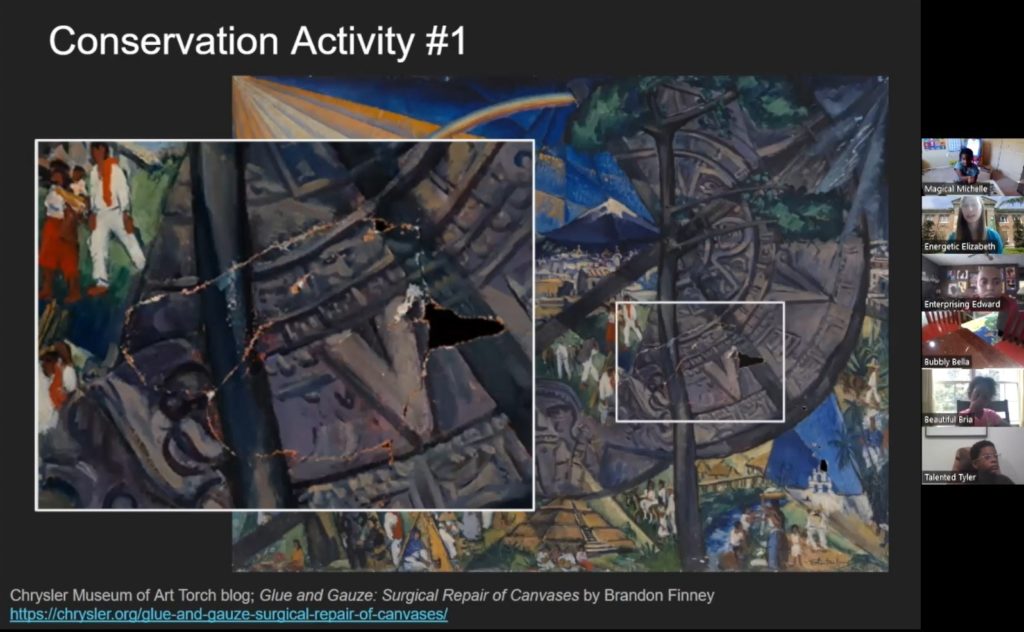
Next, Elizabeth presented about what conservators do at museums. To help describe this specialized job, she related the process of examining a painting to a doctor’s visit, in order to make it more relatable to the kids. She explained that just like we all sometimes need medicine to help fix us when we are sick, sometimes paintings need to be treated as well. She showed common tools used by conservators in their examinations, like a flashlight and a magnifier. Then, she provided examples of paintings from the Chrysler Museum of Art before treatment, and asked the kids what problems they could identify with each piece that a conservator might address. They easily recognized that the first painting had a tear and a hole, and the second painting needed to be cleaned. She then revealed what each painting looked like after it was treated by a conservator. It was hoped that the children would learn that conservators fix and clean artworks.
Takeaway #3: Asking more interactive questions, or providing more examples related to the doctor metaphor may have made the lesson of what conservators do at museums stronger, as opposed to what curators do.
Outcomes and Lessons
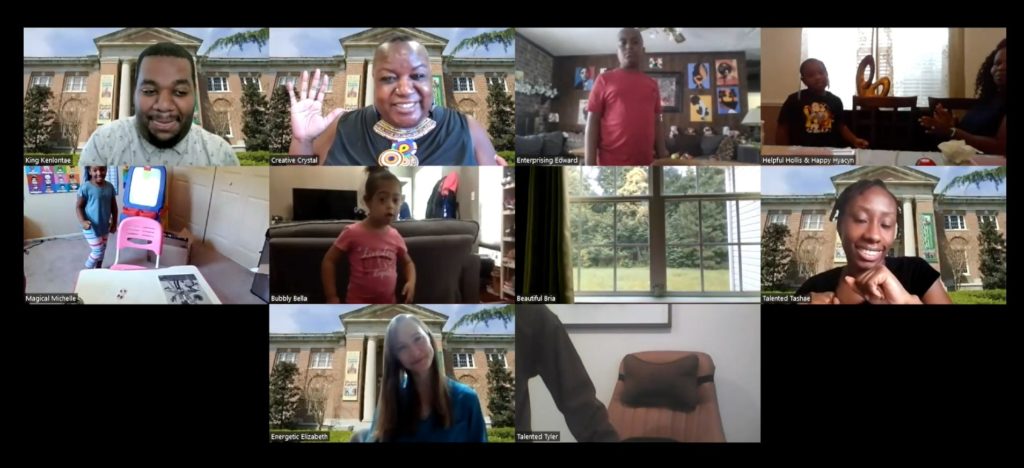
In creating this program, we wanted the kids to understand the basics of what curators and conservators do at museums. At the end, we tested them to see if they could recall what each person did. When asked “what does a curator do”, one child responded by referencing the conservation information. This was probably a reflection of the fact that it was Elizabeth who asked the question, and this was the most recent material discussed. We also asked the kids to name different kinds of museums, to help them recall the introduction by Tashae, and that resulted in some good examples. We finished off with a virtual freeze dance to get the kids up and moving before their next art activity! It was so fun to interact with younger children, even virtually, and we hope to do more programs like this in the future!
If a similar program were done in-person, the conservation and curatorial activities would need to be reconfigured somewhat. It would be harder to show a damaged painting, followed by the before and after images side by side, which worked very well over Zoom. Having a screen or PowerPoint component would probably be necessary, since showing a fragile artwork in-person would not be very safe. On the other hand, having the physical paintings which are in good condition would allow us to point out specific aspects of them that could help reinforce the discussion about the piece so the children can better understand the questions being asked. This could be possible with a painting in good condition, as we did for our Osher lecture which you can read more about here.
References
Finney, Brandon. Glue and Gauze: Surgical Repair of Canvases. Chrysler Museum of Art Torchlight Blog. 6 May 2021.
Explore other articles like this
The Andrew W. Mellon Fellowship: Now and Beyond
In this post, I will highlight some of the accomplishments of this project and address two main takeaways that can help those looking to reproduce a similar fellowship program.
Art Spotlight: The Abandoned Hut by Mordecai Buluma
In this blog post Angie and Tashae discuss the symbolism behind The Abandoned Hut by Mordecai Buluma as well as the conservation treatment used to prepare it for exhibition.
Opening of I am Copying Nobody the Art and Political Cartoons of Akinola Lasekan
On April 13, 2024, I Am Copying Nobody: The Art and Political Cartoons of Akinola Lasekan opened at the Chrysler Museum of Art. Here are some highlights from the exhibition.
